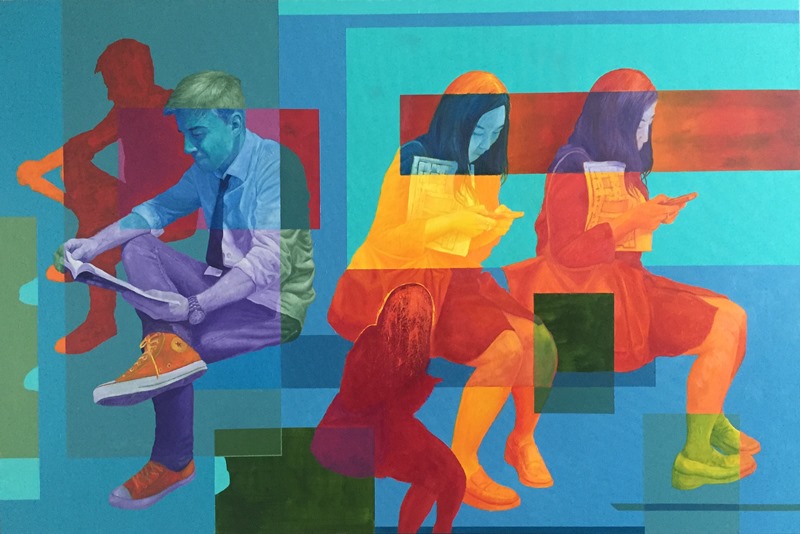
Painting is storytelling with colours, isn’t it? What if you’re unable to see many of the red and green nuances, though? Mark Liam Smith, 44, is a colour-blind painter, based in Canada, who studies different chromatic relationships to create narratives on canvases. In art school he used to hide his red-green colour-blindness which prevents him from distinguishing many of these two colours’ nuances. Yet, Mark is now confident, because he picks the right tone by imagining how light or dark a colour would be on a black and white TV screen.
The England-born artist has been painting for just two years now and has already been part of 16 shows in North America, Europe and Australia. He succeeds thanks to using an old art book which contains over 500 skin tones and recipes for the colour-blinds. Mark experiments with hues 70 hours a week.
Yet, the colours aren’t the only vital component. In a video conversation between London and Toronto, Mark shows me one of his last paintings, called Diogenes and Alexander, and outlines that the story you’re representing furthers your artistic aims as much as colours do. The big canvas is a modern interpretation with saturated colours of a 225-year-old painting illustrating the meeting between the Greek philosopher and Alexander the Great. While pointing at the figures’ muscles, Mark says that his knowledge of anatomy helps him draw human bodies more precisely. He considers the analytical aspects of artists’ brains as important as the creativity itself. Not accidentally, apart from his bachelor degree in Painting at the University of Saskatchewan, Canada, he has two more – in Physiology and Linguistics. Mark also has a PhD in Linguistics at McGill University, Canada.
Using many hand gestures and never avoiding eye contact, Mark explains that communication with other art lovers is more important for your development than how much you know about flat and round brushes and whether you can distinguish just 10 shades of green, instead of 70. He doesn’t miss any opportunity to talk to people at different art fairs gazing at his canvases. Mark also regularly discusses painting techniques and recipes for colour mixing with his 14K followers on Instagram.
Talking about his solo exhibition in September this year at Galerie Youn, in Montreal, Mark also says that art is not just about painting. He mentions that an artist has to deal with gallery administration, grant applications and social media strategies as well: “You have to use your time efficiently so no area is neglected and as many as possible are perfected. Art has to be smart work. If I tell you to knock down a tree, don’t use a baseball bat, because it doesn’t matter how good your swing is, you’re going to have a hard time taking the tree down. Pick up an axe. Don’t waste time.”
For Mark you’re a successful painter if you’re able to make strangers feel happier after looking at your canvases for just seven seconds. Regardless of how sophisticated techniques or vibrant colours you’re planning to use, “you don’t wait for inspiration in the professional art world. You just need to go through the first 10 minutes of insecurity and then you feel ready to tell interesting narratives with your brushes.”
By Atina Dimitrova